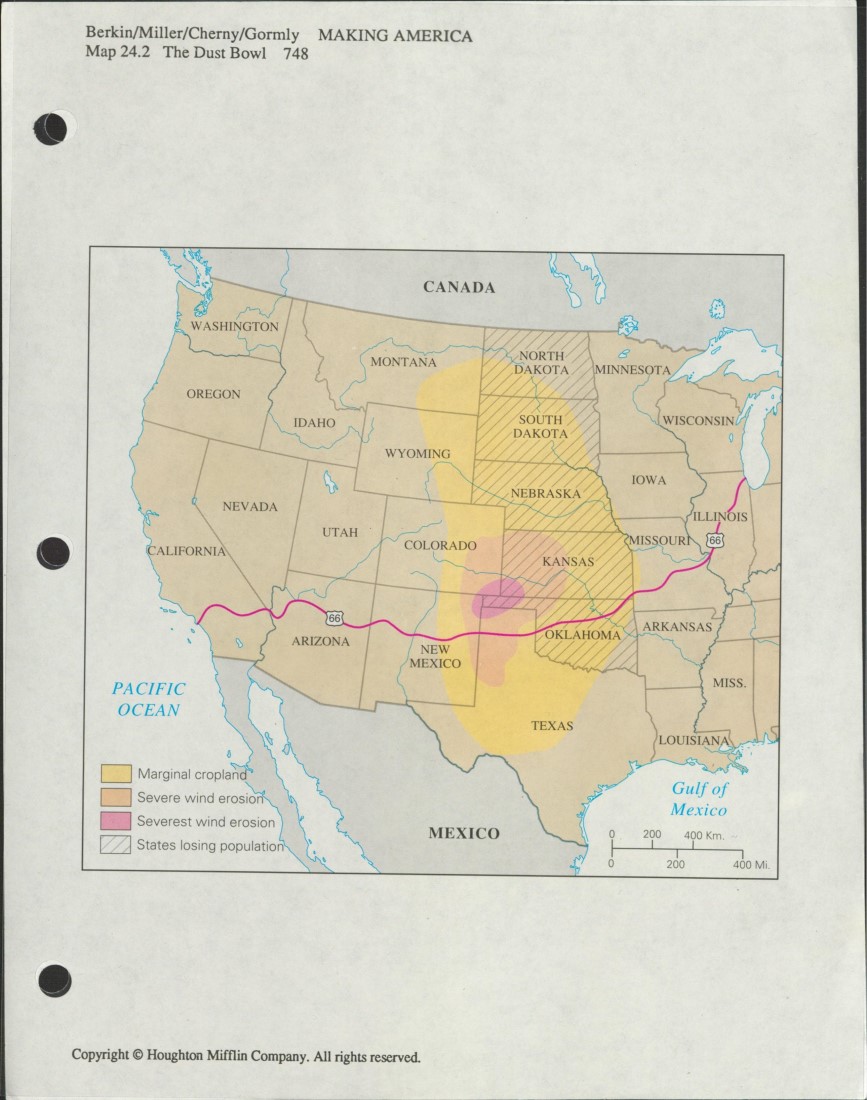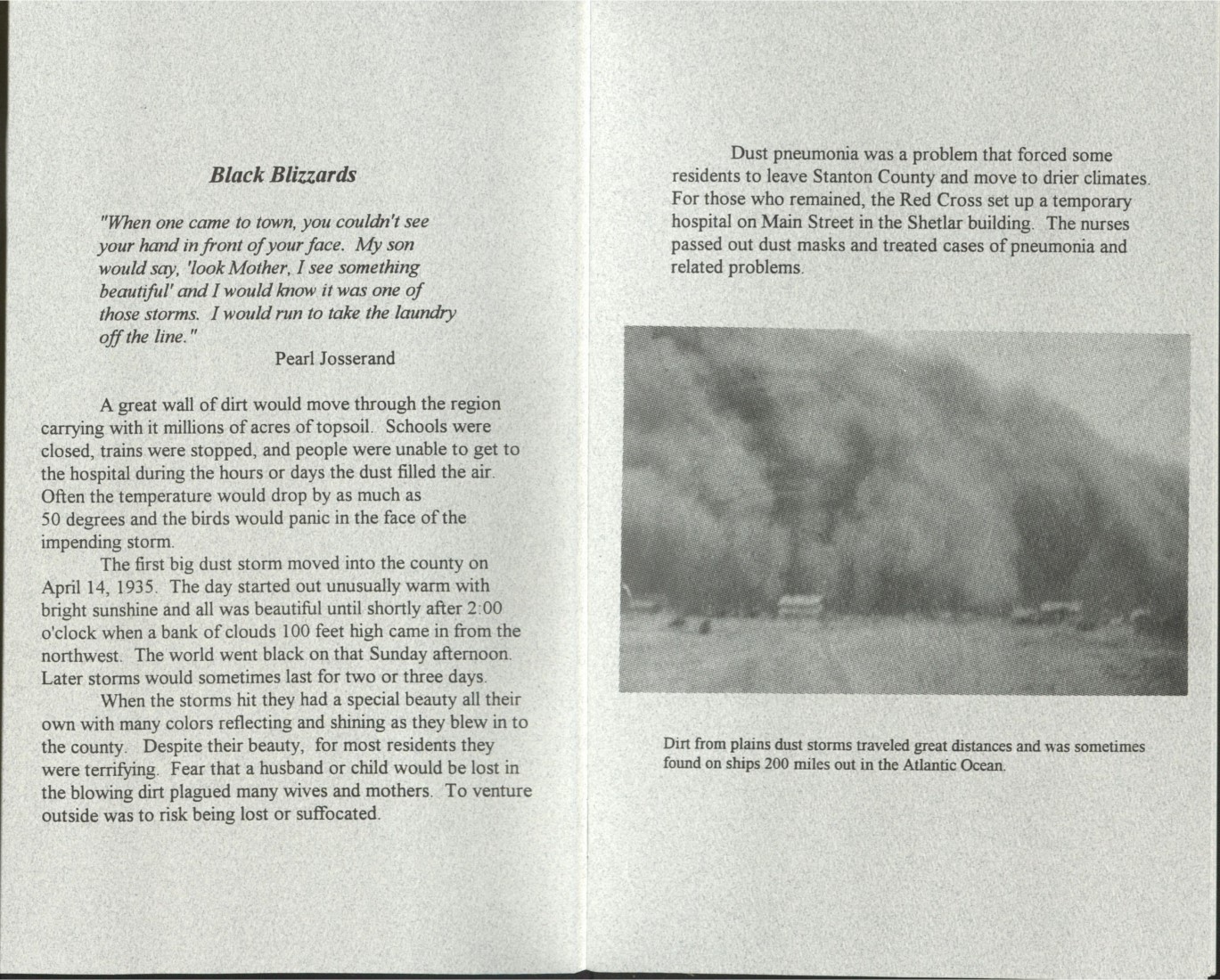That’s Distinctive!: Black Sunday
April 14th, 2023Check the blog each Friday for a new “That’s Distinctive!” post. I created the series because I genuinely believe there is something in our collections for everyone, whether you’re writing a paper or just want to have a look. “That’s Distinctive!” will provide a more lighthearted glimpse into the diverse and unique materials at Spencer – including items that many people may not realize the library holds. If you have suggested topics for a future item feature or questions about the collections, feel free to leave a comment at the bottom of this page.
In remembrance of Black Sunday, this week we share items from the personal papers of former KU history professor Lloyd Sponholtz. According to History.com, April 14, 1935, also known as Black Sunday, was the date of the worst dust storm documented during the Dust Bowl. The Dust Bowl, also known as the “dirty thirties,” was a period of severe drought in the Midwest and southern Great Plains. It began around 1930 and lasted for about a decade. By 1934, an estimated 35 million acres of formerly cultivated land had been rendered useless for farming, while another 125 million acres – an area roughly three-quarters the size of Texas – was rapidly losing its topsoil. Regular rainfall returned to the region by the end of 1939, bringing the Dust Bowl years to a close.
Black Sunday was the worst of the severe dust storms that were known as Black Blizzards. These storms included billowing clouds of dust that darkened the sky, sometimes for days at a time. In many places, the dust drifted like snow and residents had to clear it with shovels. Dust worked its way through the cracks of even well-sealed homes, leaving a coating on food, skin, and furniture. The storm of Black Sunday started in the Oklahoma Panhandle and moved east, with an estimated three million tons of topsoil blowing off the Great Plains.


Tiffany McIntosh
Public Services
